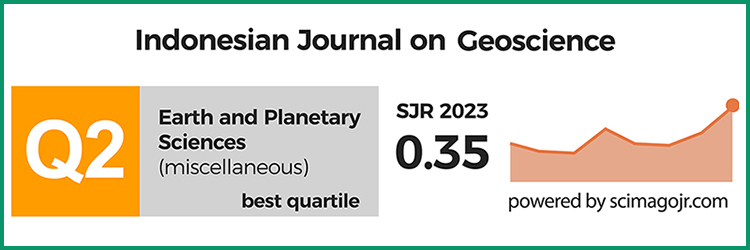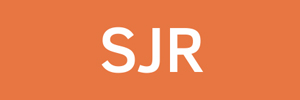Fluid Inclusion and Mineralization of Base Metals in Cretaceous Metamorphic Rocks, in Jiwo Hills, Bayat, Klaten, Central Java
DOI:
https://doi.org/10.17014/ijog.11.2.251-267Abstract
The lack of mineralization research on metamorphic rocks in Java, especially in the Jiwo area, is part of the research interest. The host rock of ore mineralization in the Jiwo area is Cretaceous metamorphic rock located in the hilly area of Jiwo, Klaten, Central Java. The presence of chlorite, actinolite, quartz, epidote, and garnet minerals indicates the metamorphic facies of greenschist. Meanwhile, the presence of glaucophane, quartz, and epidot minerals is a metamorphic facies of blueschist. The metamorphic rock research method was carried out in several stages: 1. Observation; 2. Field data collection, including mapping of metamorphic rock distribution, general geological conditions and rock sampling; and 3. Laboratory analysis. Laboratory analysis testing consists of petrography, ore microscopy, geochemistry (AAS), and fluid inclusion. Alterations that develop in the researched area are in the form of propylitic (chlorite, calcite, epidote), argillic, and silicification (quartz, graphite, calcite, carbonate minerals). Ore microscopy analysis has identified the presence of mineral sulfide such as pyrite, chalcopyrite, bornite, galena, and covellite. In addition, galena was found covered with chalcopyrite. Based on AAS analysis on mineralized metamorphic rocks, Au levels are 0.001 - 0.008 g/t, Ag 0.1 - 2.4 g/t, Cu 4 - 75 g/t, Zn 14 - 166 g/t, and Pb 11 - 60 g/t. The inclusion of fluid from the discordant vein was obtained with a homogenization temperature (Th) of 312 - 435 0C, with a salinity of 1.95 - 5.05 wt. % eq. with isothermal mixing and heating depressurization conditions. The isothermal mixing process is a mixture of meteoric fluids and metamorphic fluids. Meanwhile, heating depressurization occurs during subduction, so that the temperature is relatively high. The homogenization temperature (Th) of the concordant vein ranges from 168.5 - 296.55 °C, with a salinity of 1.95 -12.6 wt% NaCl eq. A salinity of 12 wt% NaCl is formed due to liquids that are aquos trapped at high pressure and temperature conditions and the devolatilization process that occurs during subduction. Based on the plotting of the homogenization temperature range and the salinity of fluid inclusion, which is 168.5 - 4350C and 1.95 - 12.6 wt% NaCl eq, the type of deposits in the study area is in the range of Au lode or orogenic deposits. The existence of two homogenization clusters in the Jiwo Hill is estimated to be part of the process of forming the blueschist facies with greenschist which is shown in the retrograde actinolite in the glaucophane epidote schist rock which is part of the blueschist facies.



















